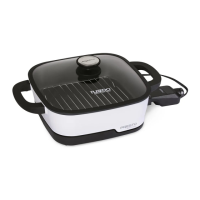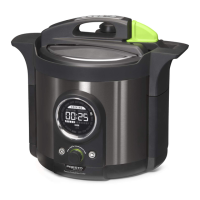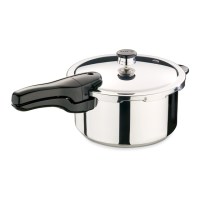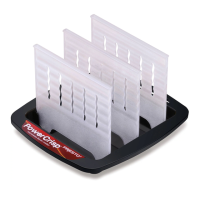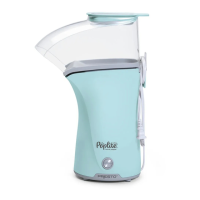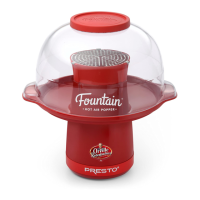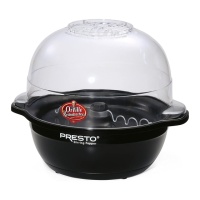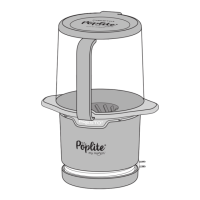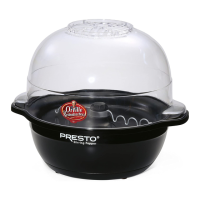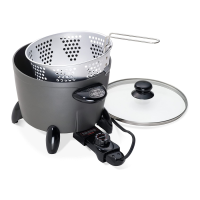9
PRESSURE CANNING Tomatoes and Tomato Products
Tomatoes and tomato products may be safely processed using the boiling water method or pressure canning method. However, for
some tomato products, the pressure canning method may result in a more nutritious canned product. (For boiling water canning
instructions, see page 21).
Acidifying Tomatoes and Tomato Products
Tomatoes have a pH close to 4.6, which means it is necessary to take precautions to can them safely. First, carefully choose the toma-
toes for canning. Use only tomatoes that are disease-free, preferably vine-ripened, and rm.
Second, an acid must be added to tomatoes whether they are processed using the boiling water method or pressure canning method. To
ensure the safety of whole, crushed, or juiced tomatoes, add 1 tablespoon bottled lemon juice (not natural juice) or ¼ teaspoon citric
acid per pint jar; for quarts, add 2 tablespoons bottled lemon juice or ½ teaspoon citric acid.
Salt
Tomatoes and tomato products may be canned with or without salt. Salt is used only for avor, as it is not used in a large enough
quantity to prevent spoilage. If salt is desired, use only canning or pickling salt. Table salt contains anti-caking agents that may cause
cloudiness in the liquid inside the jars.
The recommended amount of salt is ½ teaspoon for each pint jar, 1 teaspoon for each quart jar.
Tip: Dry spices can safely be added to a tested canning recipe.
CANNING RECIPES: TOMATOES
TOMATOES—WHOLE OR HALVED
(packed in water)
Wash smooth, rm, ripe tomatoes. Loosen skins by dipping tomatoes 1 minute in boiling water, then in cold water. Peel and remove
core. Leave whole or halve, or if using large tomatoes, quarter.
Hot Pack: Place prepared tomatoes in a large pot and add just enough water to cover. Bring to a boil and boil gently for 5 min-
utes. Add bottled lemon juice or citric acid to hot jars (see above). Add salt, if desired (see above). Pack hot tomatoes
in hot jars, leaving ½-inch headspace. Fill jars with hot cooking liquid, leaving ½-inch headspace. Remove air bubbles.
Clean jar rims. Position lids and secure with bands.
Raw Pack: Add bottled lemon juice or citric acid to hot jars (see above). Add salt, if desired (see above). Pack prepared tomatoes
in hot jars, leaving ½-inch headspace. Fill hot jars with boiling water, leaving ½-inch headspace. Remove air bubbles.
Clean jar rims. Position lids and secure with bands.
Pressure canning: Process pints and quarts 10 minutes.
TOMATOES—WHOLE OR HALVED
(packed raw without added liquid)
Wash smooth, rm, ripe tomatoes. Loosen skins by dipping tomatoes 1 minute in boiling water, then in cold water. Peel and remove
core. Leave whole or halve. Add bottled lemon juice or citric acid to hot jars (see above). Add salt, if desired (see above). Fill jars
with raw tomatoes, pressing until spaces between them ll with juice. Leave ½-inch headspace. Remove air bubbles. Clean jar rims.
Position lids and secure with bands.
Pressure canning: Process pints and quarts 25 minutes.
TOMATO JUICE
Wash ripe, juicy tomatoes. Remove stem ends. To prevent juice from separating, quickly cut about 1 pound of tomatoes into quarters
and put directly into a large pot. Heat immediately to boiling while crushing. Continue to slowly add and crush freshly cut tomato
quarters to the boiling mixture. Make sure the mixture boils constantly and vigorously while adding more tomatoes. Continue until
the pot is three-quarters full. Simmer 5 minutes. If juice separation is not a concern, simply slice or quarter tomatoes into a large pot.
Crush, heat, and simmer for 5 minutes before juicing.
Press heated juice through a sieve or food mill to remove skins and seeds. Heat juice again to boiling.
Add bottled lemon juice or citric acid to hot jars (see above). Add salt, if desired (see above). Fill hot jars with hot tomato juice,
leaving ½-inch headspace. Remove air bubbles. Clean jar rims. Position lids and secure with bands.
Pressure canning: Process pints and quarts 15 minutes.
